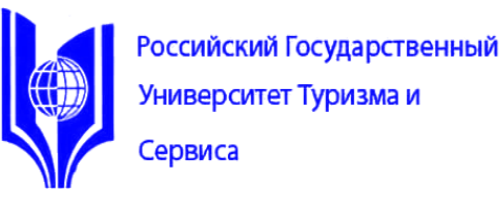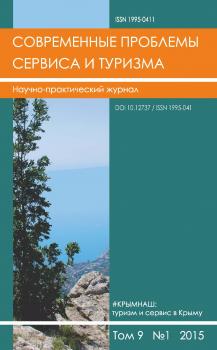employee
Moscow, Russian Federation
Legends, being the result of collective creative activity of local residents of certain areas in the theory and practice of international tourism have received their well-deserved recognition as intangible tourist resources. From a marketing point of view, the legend is a highly effective tool to increase tourist interest for sites of destinations. Currently creation of legends can be considered one of the most promising and popular areas of content marketing in tourism, which allows not only to induce a primary tourist interest in the destination, but also to get an emotional response from the tourist consumption of services in destination that creates long-term loyalty and increases the likelihood of repeat visits. Thus, the legend is also a tool of the diversity of impressions in tourist tourist-excursion programs. Despite the importance of folk legends and creation of legends in the development and competitiveness of destinations, these elements are rarely used in the formation of thematic tourist routes and the development of conceptual forms of tourism in the Moscow region. The article presents the results of a content analysis of the contents of legends in Klinskiy municipal district related to the origin of settlements, historical facts, entertaining events, etc. Special attention is given to glass craft legends associated with Klin and its surroundings. As scientific and practical recommendations in the article indicated are possible directions for use of folk legends and creation of legends in a complex tourism product promotion in Klinkiy municipal district.
legend, creation of legends, folk crafts, glass craft, memory products, souvenirs, destination.
Растущая конкуренция на туристском рынке обусловливает поиск новых инструментов позиционирования, повышения запоминаемости туристской дестинаций, методов управления ее конкурентоспособностью [4]. Одним из таких инструментов выступает использование легенд, что позволяет создавать уникальный региональный турпродукт, формировать аттрактивные туристские зоны. Причем он позволяет не только увеличивать ресурсный потенциал места, но и корректировать его содержание, исходя из туристского спроса [3, 5].
Заметим, что легендарика (легендогенез) не предполагает неограниченной фантазии без каких-либо культурологических оснований. Как показывает практика, в эффективном использовании содержания легенд при туристском проектировании должны участвовать научные работники, краеведы, писатели, художники и т.д. Тогда будет создана тематическая основа «позиционирования туристской дестинаций, которая заключается в построении вокруг объекта показа некоего ореола мифов и загадок, позволяющих стимулировать туристский интерес» [б].
Использование легенд может выражаться в ряде атрибутов туристской дестинаций: а) в разработке и реализации
1. Artem´eva O.A., Vapniarskaia O. I., Platonova N. A. Zarubezhnyi i rossiiskii opyt sozdaniia turistskikh produktov, osnovannykh na iskusstvennoi attraktsii: metodicheskie osobennosti [Foreign and Russian experience in creating tourism products based on artificial attraction: methodical features] // Sovremennye problemy servisa i turizma [Service & Tourism: Current Challenges]. 2010. № 1. pp. 90-96.
2. Afanas´ev O.E., Afanas´eva A. V. Funktsional´noe znachenie i mesto turistskikh legend v formirovanii privlekatel´nykh svoistv destinatsij [The functional significance and place of tourist legends in creating attractive destination properties] //Vestnik Associacii vuzov turizma i servisa [Universities for Tourism and Service Association Bulletin]. 2015. T.9. № 1. p. 52-59 (DOI:https://doi.org/10.12737/7943).
3. Barabanova N. A. Informatsionnyi aspekt metodiki izucheniia turistskogo potentsiala territorii [Information aspect methods of studyingthe tourism potential of the area] // Izvestiia Samarskogo nauchnogo tsentra Rossiiskoi akademii nauk. Til, 4(6). 2009. pp. 1389-1395.
4. Vapniarskaia O. I., Kharitonova T. V., Krivosheeva T. M. Tendentsii v praktike menedzhmenta turistskoi destinat-sii [Trends in the practice of management of tourist destinations] // Vestnik Assotsiatsii vuzov turizma i servisa [Universities for Tourism and Service Association Bulletin]. 2015. T.9. № 1. p. 21-28 (DOI:https://doi.org/10.12737/7939).
5. Vedenin lu.A. Mifologiia turistskikh resursov i evoliutsiia predstavlenii о resursnom potentsiale territorii [Mythology of tourist resources and the evolution of ideas about resource potential of of territories] // Izv. RAN. Ser. geograf. 1998. № 4. pp. 88-89.
6. Dorofeev A. A. Territorial´noe pozitsionirovanie v turizme [Territorial positioning in tourism] // Vestnik TvGU. Seriia «Geografiia i geoekologiia». 2011. 1(9). pp. 99-113.
7. Kazakova S. A. Metody rynochnogo pozitsionirovaniia turproduktov, osnovannykh na iskusstvennoi attraktsii [Methods of market positioning of tourist products based on artificial attraction] //Servis v Rossii i za rubezhom. 2012. № 10. pp. 104-110.
8. Kutsenko E. V., Gorozhanina S. V. Klinskie elochnye ukrasheniia: komplekt bukletov «Puteshestviia v mir narod-nogo iskusstva Podmoskov´ia» [Klinskie Christmas decorations: a set of booklets «Travelling to the world folk art of the Moscow region»]. M.: Izd-vo «Melikhovo», 2006.
9. Nikitina I. Klinskaia Alenushka [Klinskaya Alenushka]. M.: OOO «Izd-vo Strelets», 2007.
10. Skazkio Klinskoi zemle [Tales of the land of Klin]. Klin: Izd-vo OOO NTIF Studiia-S, 2005.
11. Trotsenko A. V. Kontent-analiz legend как resursnoi sostavliaiushchei turistskogo prostranstva Kryma [Content analysis of legends as a resource component of the Crimean tourist space] // Sovremennye problemy servisa i turizma [Service & Tourism: Current Challenges]. 2015. T.9. № 1. pp. 102-108 (DOI:https://doi.org/10.12737/7925).
12. http://old.mk.mosreg.ru/min_projects/2207.html [Accessed on March 1, 2015].
13. http://www.christmasheaven.ru/articles.php?article_id=22 [Accessed on April 24, 2015].
14. http://www.klin.info/articles/all/0/490 [Accessed on March 26, 2015].






